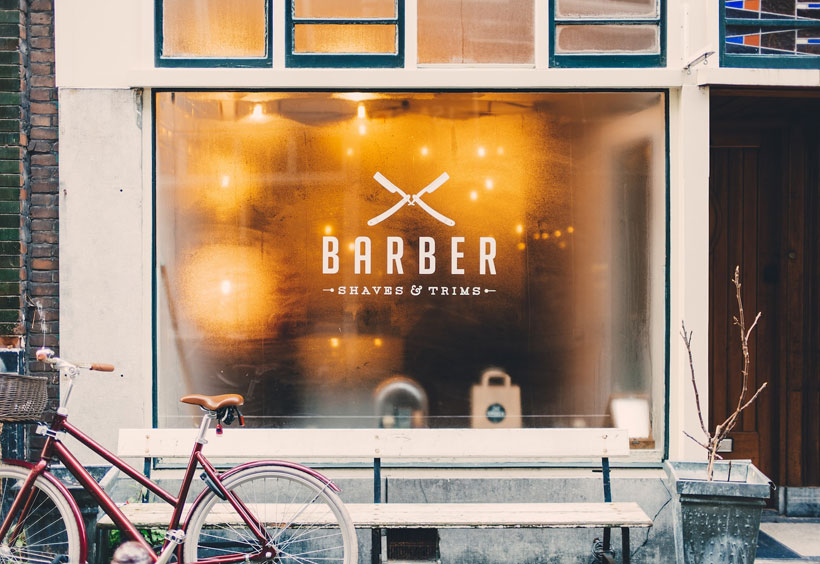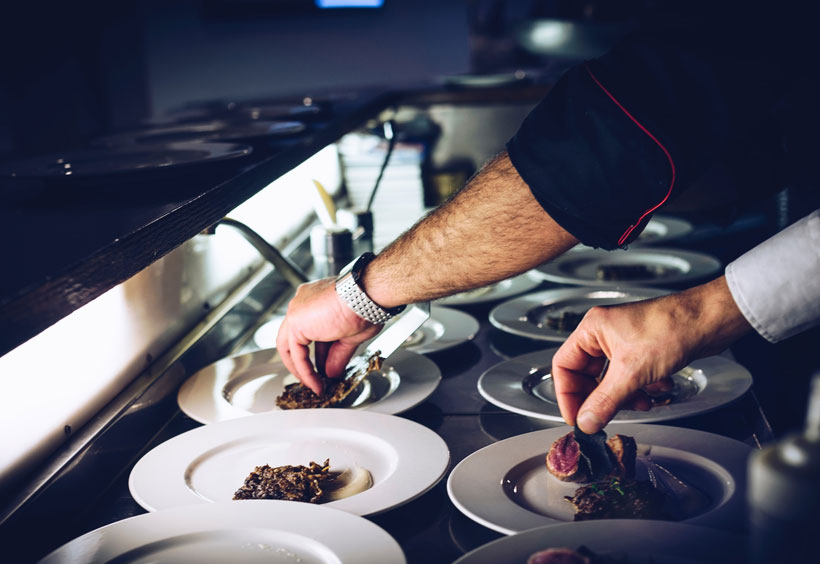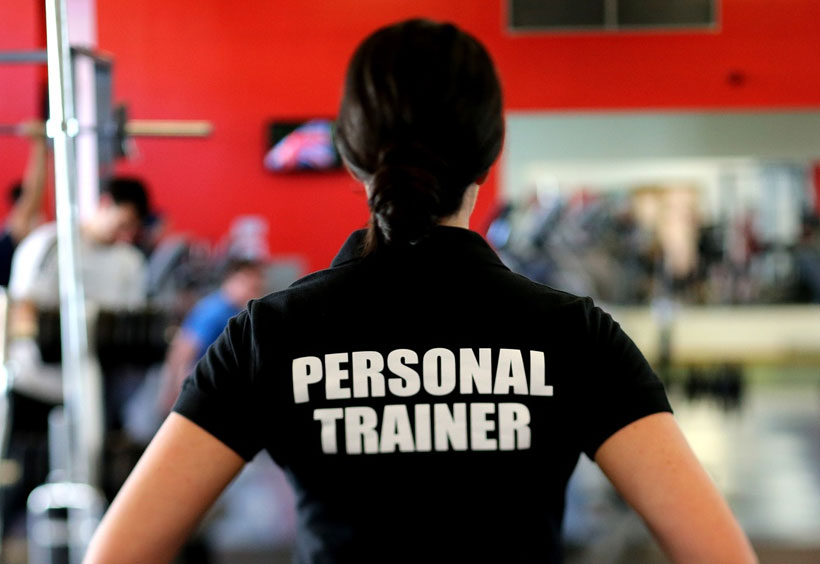How to Start a Barbershop
Sparkpush Editorial Team
Updated January 9, 2024
Edited by: Mike Shelby

So, are you ready to transform your barbershop dream into a thriving business? Let’s jump into the step-by-step process of how to start a barbershop, from conceptualization to the first client in your chair. Get ready to make your mark in the world of grooming and leave a lasting impression—one haircut at a time.
Section 1: Planning Your Barbershop Business
Identifying Your Niche and Target Audience:
To launch a thriving barbershop, you must first define your niche and understand your target audience. Determine whether you want a classic or modern barbershop vibe and decide if you’ll specialize in grooming services for men or offer unisex options. Identifying your niche shapes your brand and service offerings. Understanding your target audience’s age, gender, lifestyle, and preferences ensures you can tailor your services effectively.
Conducting Market Research:
Market research is fundamental. Analyze your local market, competitors, and industry trends. Assess population demographics, income levels, and grooming preferences. Identify competitors’ strengths and weaknesses to find gaps in the market. Stay updated on industry trends to offer relevant services.
Creating a Business Plan:
Develop a comprehensive business plan. Outline your shop’s mission, vision, goals, location, pricing, marketing strategies, financial projections, and milestones. Your business plan guides decisions and serves as a tool for financing or attracting investors.
In the next section, we’ll check out the pros and cons of your new hair clipping venture.
Section 2: Pros and Cons
Starting a barbershop can be a fulfilling endeavor, but like any business, it comes with its share of advantages and disadvantages.
Pros:
- Passion and Creativity: If you’re passionate about barbering and grooming, owning a barbershop allows you to express your creativity and showcase your skills.
- Steady Demand: Grooming services have a consistent demand. People need haircuts and grooming regularly, ensuring a steady flow of customers.
- Community Hub: Barbershops often become community hubs, fostering a sense of belonging and camaraderie among clients.
- Diverse Clientele: You’ll meet a diverse range of people, from regulars to newcomers, providing a rich and dynamic work environment.
- Profit Potential: With the right marketing and quality service, barbershops can be profitable businesses.
Cons:
- Intense Competition: The barbershop industry can be highly competitive, especially in urban areas with numerous establishments.
- Initial Costs: Setting up a barbershop involves significant initial expenses, including rent, equipment, licenses, and permits.
- Regulations and Licensing: Barbershops must adhere to state and local regulations, and barbers often require specific licenses.
- Long Hours: Operating a barbershop may involve long working hours, especially during peak times and weekends.
- Staffing Challenges: Finding and retaining skilled barbers and staff can be a challenge.
Understanding these pros and cons can help you make an informed decision and prepare for the unique challenges and rewards that come with starting a barbershop business.
Section 3: Legal and Financial Considerations
Starting a barbershop involves more than a good pair of scissors and a knack for great haircuts. First up, you’ve got to think about your business structure. Are you going solo, teaming up, or creating a corporation? This decision affects everything from your legal responsibilities to how much tax you’ll pay.
Once you’ve figured that out, it’s registration time. Each city has its own rules, but generally, you’ll be filling out some forms and parting with a registration fee. It’s a good idea to chat with a business lawyer to make sure you’ve dotted all the i’s and crossed all the t’s.
Now, let’s talk about licenses and permits. Sure, you know your way around a buzzcut, but you’ll need a barber’s license to prove it. That means barber school and a state board exam. And don’t forget about additional permits for things like health and safety, building codes, and even your shop’s sign.
And we can’t forget to talk insurance. This is your safety net. It can protect you against unexpected events like accidents, damages, or lawsuits. You’ll need to consider various types of insurance like property, liability, and workers’ compensation. It’s a good idea to consult with an insurance expert to determine the best coverage for your barbershop.
Finally, it’s all about the money. You’ll need a budget for startup costs like renovations, equipment, and your first batch of pomade. Don’t forget to calculate monthly costs like rent, utilities, and salaries, and compare them to how much you expect to make. Meeting with a financial advisor is a smart move to help keep your finances on track. Remember, a successful barbershop starts with careful planning.
Section 4: Location and Setup
The next step on your barbershop journey is all about location, location, location. This isn’t just about finding a place that fits your budget, but also about finding a spot where your future customers hang out. Is it a bustling downtown street or a quiet suburban neighborhood? Think about accessibility, parking, and visibility. Your location can make or break your barbershop.
Once you’ve got the perfect spot, it’s time to think about layout and design. This is where you can let your personality shine. Are you going for a classic, retro vibe, or something sleek and modern? Consider your customer flow, waiting area, and workstations. Make it a place where people feel comfortable and enjoy spending time.
Next, let’s talk about the tools of the trade. You’ll need barber chairs, mirrors, and hair cutting tools, of course, but also consider items like towel warmers, barber poles, and product displays. Think about what you’ll need daily and what can enhance your customers’ experience.
Lastly, don’t forget about the supplies. This includes not just hair products, but also cleaning supplies, towels, and even the coffee or magazines you offer to customers while they wait. Remember, every detail contributes to the overall experience of your barbershop. Your location, design, equipment, and supplies all play a part in making your barbershop a cut above the rest.
Section 5: Branding and Marketing
Now that your barbershop is starting to take shape, it’s time to think about branding. This is more than just a cool logo or a catchy name. Your brand is your promise to your customers. It’s what sets you apart from the rest. So, are you the neighborhood friendly barber, or the high-end luxury stylist? Your brand identity should resonate with your target customers and reflect in everything from your shop design to your customer service.
Once you’ve nailed down your brand, it’s time to shout it from the rooftops with some savvy marketing. Maybe local partnerships or events are your thing, or perhaps you prefer direct mailers or discount promotions. Don’t forget about word-of-mouth, often the best advertising comes from happy customers. The key is to find what works for your brand and your customers.
Finally, let’s talk about your online presence. In today’s digital age, this is a must. A slick website, active social media accounts, and favorable online reviews can do wonders for your barbershop. Consider online booking to make it easy for customers to schedule appointments. And don’t forget about SEO – you’ll want your shop to pop up when people search for a barber in your area.
Remember, your brand is your story. It’s what draws customers to your barbershop and keeps them coming back. So, make it a good one.
Section 6: Services and Pricing
Let’s get into the nitty-gritty of your barbershop – the services you offer. Are you sticking to the classics like cuts and shaves, or are you offering a full range of grooming services? Maybe you’re adding some unique touches, like beard treatments or straight razor shaves. Your menu of services should align with your brand and meet your customers’ needs.
Next up, pricing. This is a delicate balance. You want to cover your costs and make a profit, but you also need to be competitive and provide value to your customers. It’s a good idea to check out the competition and understand what the market rate is. But remember, people are often willing to pay more for a great experience.
Lastly, let’s chat about loyalty programs and promotions. These can be a fantastic way to reward your regulars and attract new customers. Maybe it’s a punch card that offers a free haircut after a certain number of visits, or a discount for referrals. It could even be seasonal promotions or special discounts for seniors or students.
Remember, the goal is to make your customers feel valued and keep them coming back. Your services, pricing, and promotions are all tools to help you do just that. So, make them count.
Section 7: Client Experience
Moving on, let’s talk about the heart of your barbershop — the client experience. Your goal is to create a welcoming atmosphere that makes every customer feel like a VIP. This starts with your shop’s environment. Is it clean and comfortable? Is the music just right? Even little touches like offering a beverage or a great magazine can make a big difference.
Next, you’ll need to decide how you handle appointments and walk-ins. An efficient booking system can make your life easier and provide a seamless experience for your customers. Online booking is increasingly popular and allows clients to schedule appointments at their convenience. If you accept walk-ins, make sure your system is fair and clearly communicated.
Finally, and most importantly, let’s talk about customer service. This goes beyond being friendly and polite (though that’s important too!). It’s about going the extra mile. Are you remembering your regulars’ preferences? Are you responsive to feedback? Great customer service can turn a one-time visitor into a loyal customer.
Remember, every interaction a client has with your barbershop contributes to their overall experience. From the moment they walk in, to the time they leave with a fresh cut, you have the opportunity to make it exceptional. So, put your client at the center of everything you do.
Section 8: Managing Your Barbershop Business
So, you’ve got your barbershop up and running, your clients are leaving with fresh cuts and big smiles, but there’s more to it than just great hair. In this chapter, we’ll explore the behind-the-scenes magic that keeps your barbershop thriving.
Inventory Management
Keeping your barbershop well-stocked is crucial. You’ll want to have a good handle on your inventory to ensure you never run out of essential supplies like shampoos, razors, and styling products. Implement an organized system for tracking inventory levels, reorder when needed, and keep an eye on product expiration dates. After all, nothing dampens the vibe more than running out of pomade in the middle of a busy day.
Bookkeeping and Accounting
Now, let’s get down to the numbers. Efficient bookkeeping and accounting are essential for managing your barbershop’s finances. Keep meticulous records of income and expenses, and consider using accounting software to simplify the process. Regularly reviewing your financial statements will help you make informed decisions and ensure your barbershop remains financially healthy.
Growth and Expansion Strategies
Looking to take your barbershop to the next level? It’s time to think about growth and expansion. Explore opportunities like opening additional locations, introducing new services, or expanding your client base. Consider marketing campaigns, collaborations, or even franchising if you’re feeling ambitious. With the right strategies in place, your barbershop can continue to grow and flourish, providing even more clients with top-notch cuts and a fantastic experience.
Section 9: Challenges and Success Tips
Running a barbershop isn’t all smooth fades and clean shaves. In this chapter, we’ll explore some common challenges you might face and share tips on how to overcome them while keeping your clients happy.
Dealing with Competition
Competition in the barbershop industry can be fierce. To stand out, focus on what makes your barbershop unique. Whether it’s exceptional customer service, specialized services, or a trendy atmosphere, highlighting your strengths can help you stay ahead. Keep an eye on your competitors, adapt when necessary, and always strive to offer something that sets you apart.
Adapting to Industry Trends
The world of grooming and fashion is constantly evolving. To keep your barbershop relevant, stay updated on industry trends. Attend trade shows, follow style influencers, and continuously train your barbers in the latest techniques and styles. Embracing change and innovation will ensure that your barbershop remains a go-to destination for clients seeking the latest trends.
Customer Retention and Satisfaction
Happy clients are the lifeblood of your barbershop. Building strong relationships and ensuring customer satisfaction is key to success. Offer loyalty programs, ask for feedback, and address any concerns promptly. Go the extra mile to make every client feel valued and appreciated. When your clients leave with a great haircut and a smile, they’re more likely to return and recommend your barbershop to others.
The Best States for Your Barbershop
Ranking the best states to start a barbershop can vary depending on various factors such as market demand, regulations, competition, and cost of living. It’s important to conduct thorough research before deciding. However, here is a general ranking based on some key factors for starting a barbershop:
- Texas
- Florida
- California
- Georgia
- North Carolina
- New York
- Virginia
- Illinois
- Arizona
- Ohio
- Colorado
- Pennsylvania
- Tennessee
- Michigan
- Nevada
- New Jersey
- Maryland
- Washington
- Oregon
- Massachusetts
- Indiana
- Minnesota
- Missouri
- Wisconsin
- Utah
- Oklahoma
- Alabama
- South Carolina
- Kentucky
- New Mexico
- Louisiana
- Arkansas
- Kansas
- Iowa
- Nebraska
- Idaho
- West Virginia
- New Hampshire
- Maine
- Rhode Island
- Hawaii
- Montana
- Delaware
- Vermont
- South Dakota
- North Dakota
- Alaska
- Wyoming
- Mississippi
- Connecticut
The Bottom Line
Starting and managing a barbershop is a rewarding journey filled with creativity and entrepreneurship. With careful planning, dedication, and a commitment to quality, your barbershop can thrive in a competitive market. Remember, it’s not just about cutting hair; it’s about providing an exceptional experience that keeps clients coming back for more. Best of luck on your barbershop adventure!









